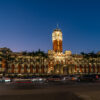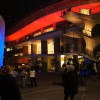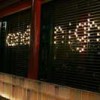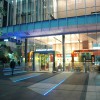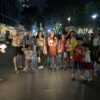Transnational Lighting Detectives Forum 2019 in Shenzhen
“Shenzhen Nightscape 2030”
The modern metropolis of Shenzhen, China has shown a striking amount of development and is the focus of attention around the world in the field of design and lighting technology. From the phenomenal speed of skyscraper construction to a cashless lifestyle to almost 100% attainment of electric buses and taxis, this is Shenzhen. In the field of lighting, so-called media facades of LEDs showcase nightscapes to defy imagination and seem unstoppable. What does the future hold for the nightscape of Shenzhen?
The 15th annual TNT Forum aimed to create a platform to discuss the nightscape of this enthusiastic and frenzied city 10 years down the road in 2030. Participation from local students and residents exceeded expectations and through their proactive efforts proposals concerning the future of various Shenzhen nightscapes were discussed.
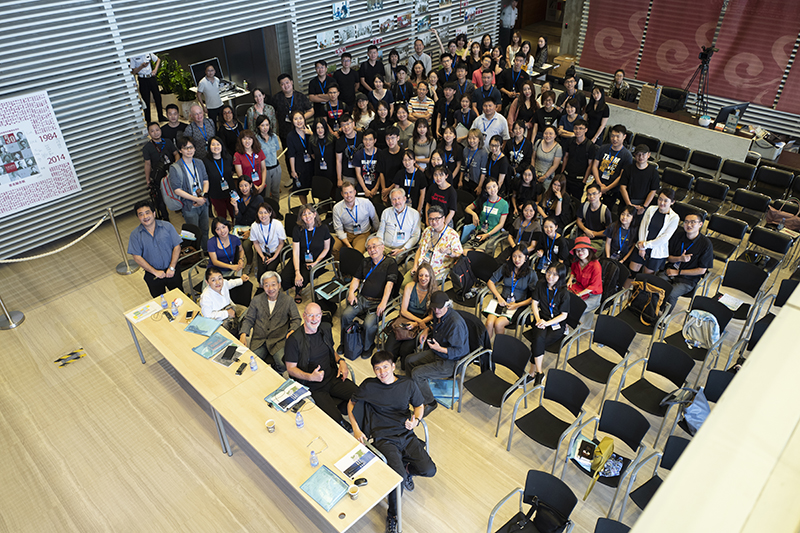
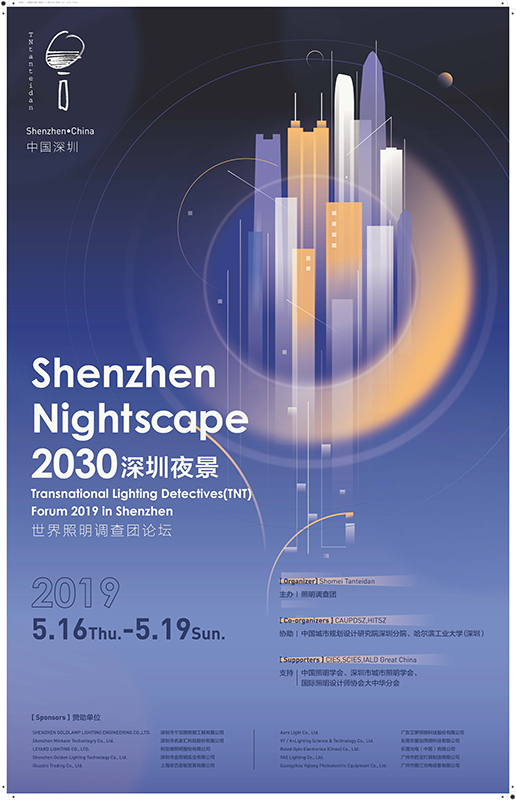
Event Outline
■ Date:
2019 May 16th(THU)〜May 19th (SAT)
■ Organizer:
Lighting Detectives
■ Co-organizer:
China Academy of Urban Planning & Design Shenzhen
Harbin Institute of Technology (HIT) Shenzhen
■ Cooperated with:
China Illuminating Engineering Society (CIES)
Shenzhen Illuminating Engineering Society (SZIES)
International Association of Lighting Designers (IALD) Great China
■ Sponsors:
Shenzhen Goldlamp Lighting Engineering Co., Ltd
Shenzhen Minkave Technology Co., Ltd.
Leyard Lighting Co., Ltd.
Shenzhen Golden Lighting Teconology Co., Ltd.
iGuziini Trading Co., Ltd
Aero Light Co., Ltd.
VF/A++ogjtomg Scoemce & Tecjmp;pgu Co., Ltd.
Roled Opto Electoronics (China) Co., Ltd.
VAS Lighting Co., Ltd.
Guangzhou Yajiang Photoelectric Eauipment Co., Ltd.
Contents & Time Table
① Nightwalk & Workshop
Divided into six groups and surveyed assinged area(5/17)
On the second day of the forum, we reviewed the nightwalk in a group and made proposals for the 2030 Shenzhen nightscape.(5/18)
② Presentation & Critique
・Participants presented proposals for the Shenzhen nightscape in 2030 and a city walk review was conducted on the assigned six areas. (5/19)
・Lighting Detective members critiqued the presentations.
③ Talk Event
A keynote panel discussion was held based on the forum theme: “Shenzhen Nightscape of 2030.” (5/19)
④ Party
Two parties were held in honor of those cooperating with the event.
・Welcome Party(5/16)
・Farewell Party(5/19)
Event Time Table
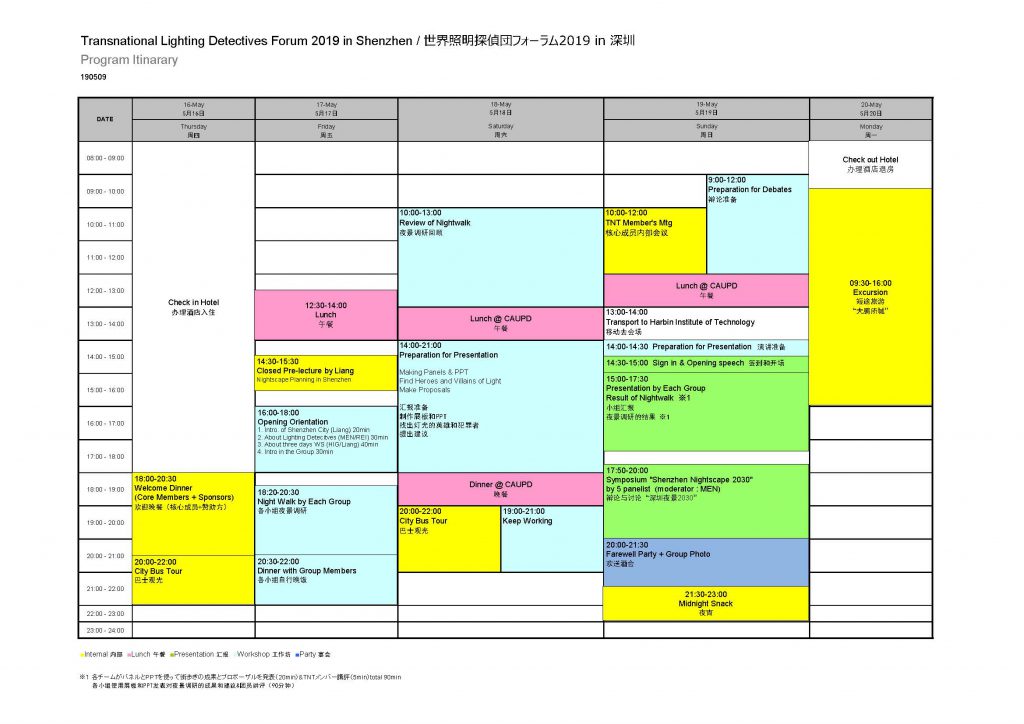
Nightwalk Areas
Conducted nigthwalk in 6 selected areas which represent characteristic of Shenzhen.
Team A Shennan Road Starting point of Shenzhen development
Team B Huaqiang Area Electoronic Street
Team C CBD Area Civic and Cultral Hub
Team D Shenzhen Bay Bay Area, Promenade and Parks
Team E OCT Area Mixed developed community
Team F Shuiwei Village Traditional housing community
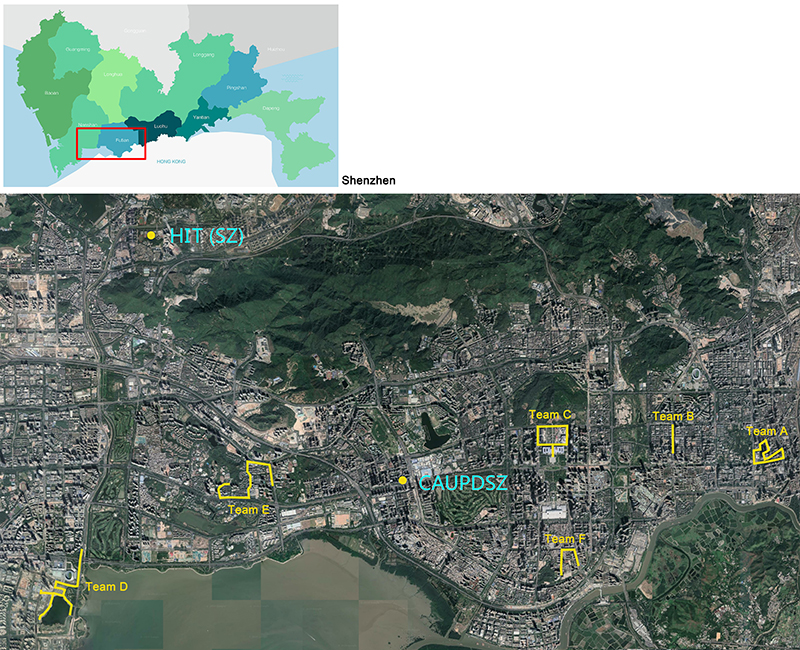
Event Details
① Orientation May 17th @ CAUPD
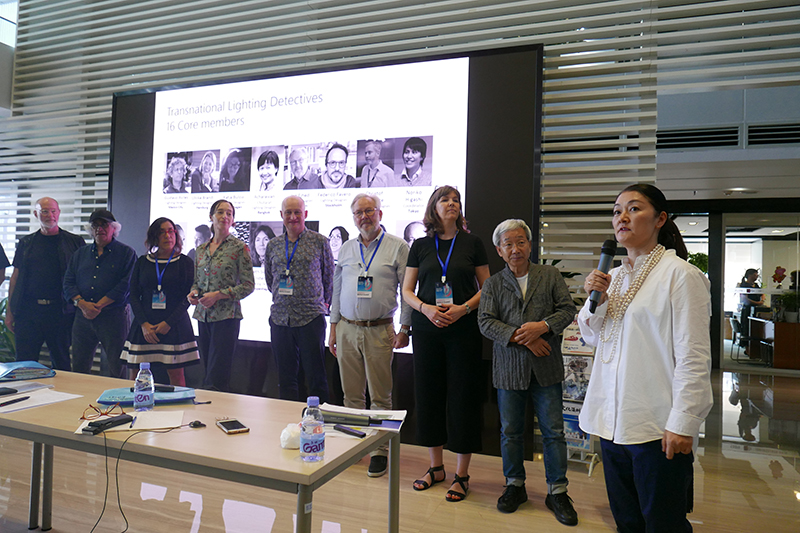
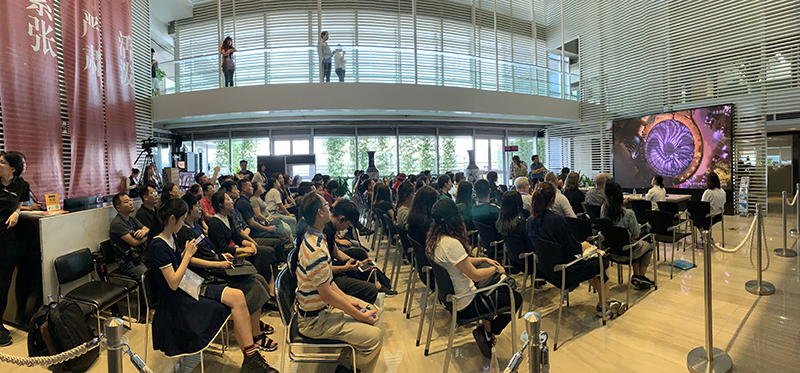
At the orientation, first on the forum program, the overall schedule was reviewed in detail, LightingDetective Core Members were introduced, and the methodology of a city walk was explained. Mr. Lyang, of the China Academy of Urban Planning and Design Shenzhen, offered a commentary on the planningof the Shenzhen cityscape and nightscape.
Participants were able to hear long term and intermediate options for the planning phase, make it even easier to imagine the nightscape of Shenzhen in 2030.
Next, the 90-member group of participants, centering mostly on university students, divided into six groups. Each group then made introductions, got to know each other, and discussed the characteristics and what they might find in the assigned survey area. Unaccustomed to communication in English, in the beginning a few participants were shy and reserved, but most participants seemed to want to absorb as much as possible from the Lighting Detective Core Members and after a while actively participated in discussions, for a very good icebreaking session.
② Nightwalk May 17th
After introductions and review of the assigned area, each team set off on their city walk. Each team set off for their assigned area along with a Lighting Detective Core Member to act as a central figure to guide discussion during the walk about existing positive and negative lighting environments. The nightscape of a city acts as an index to measure prosperity and development and one could reasonably say that Shenzhen is a present and progressive wonder of greater China.
The six areas selected for city walks for this event are areas of the city that saw miraculous development from just small villages to become part of the skyscraper jungle of modern Shenzhen. Each area has tried to preserve a traditional identity, while taking on the challenges of urban lighting plans. Through the city walks we surveyed the present state of the Shenzhen lighting environment and discussed possibilities for 2030.
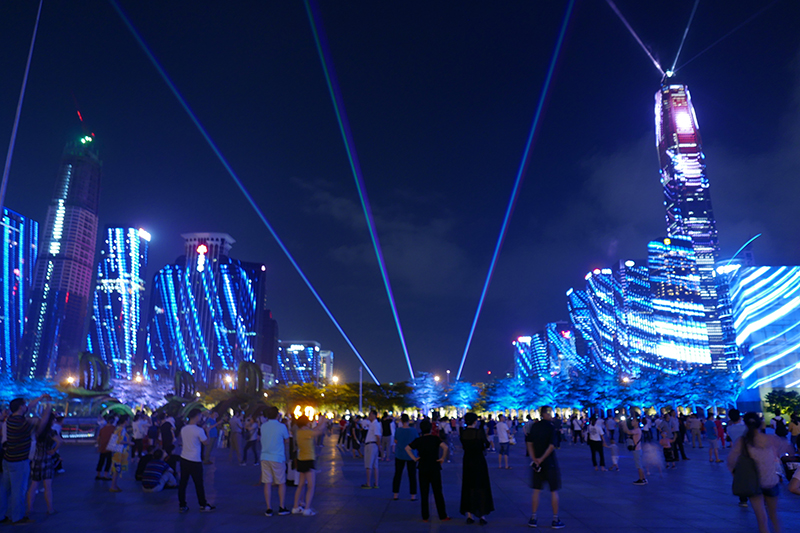
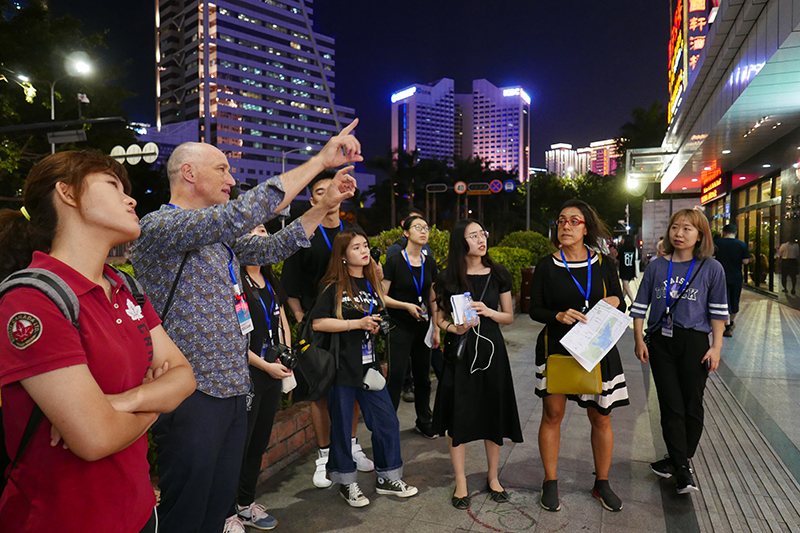

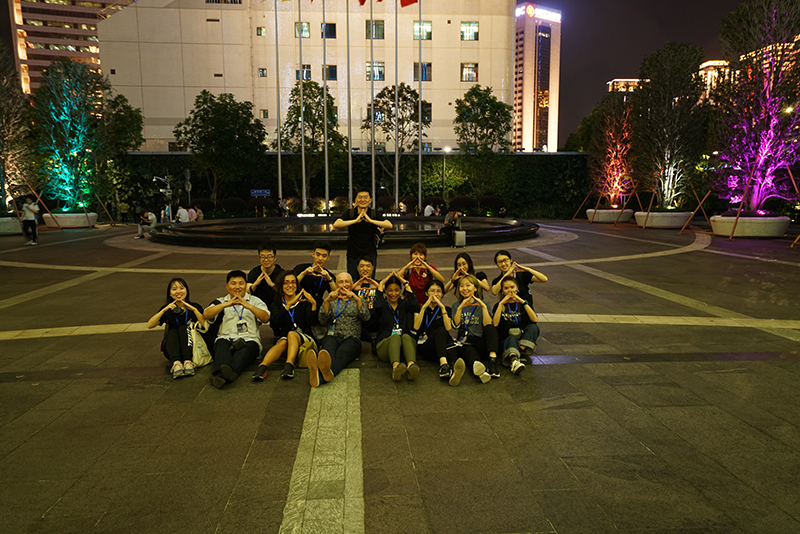
③ Group Discussion May 18th @ CAUPD
The teams gathered again in small groups to look over images taken from the preview night`s city walk and to discuss hero and villains of light. The teams discussed why each hero or villain was selected and applied appropriate keywords to each. Work was progressing, although each group had their own style of discussion, with aggressive and heated dialog at times. Negative aspects were not just slammed for being bad, but discussion progressed to consider ideas for improvement. In addition, discussion also included proposals for 2030 for each area.
Each team then organized the results of their discussions onto two panels (1820cm x 910cm) to be presented at a seminar the next day. Late into the night, each team was absorbed in preparations, considering and reconsidering options for the presentation.
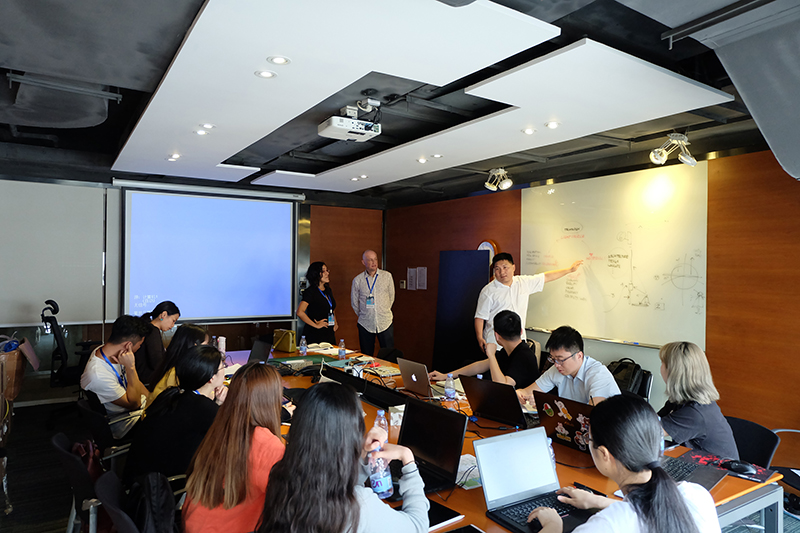
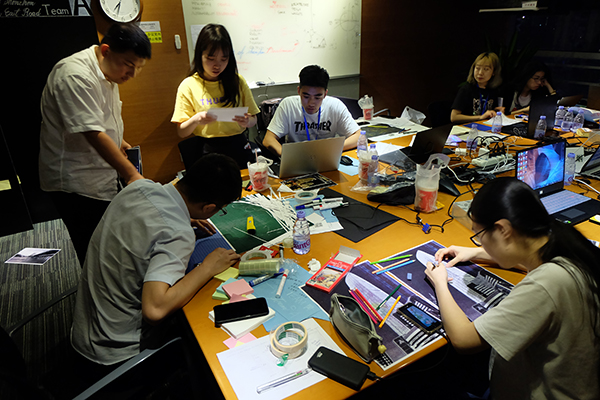
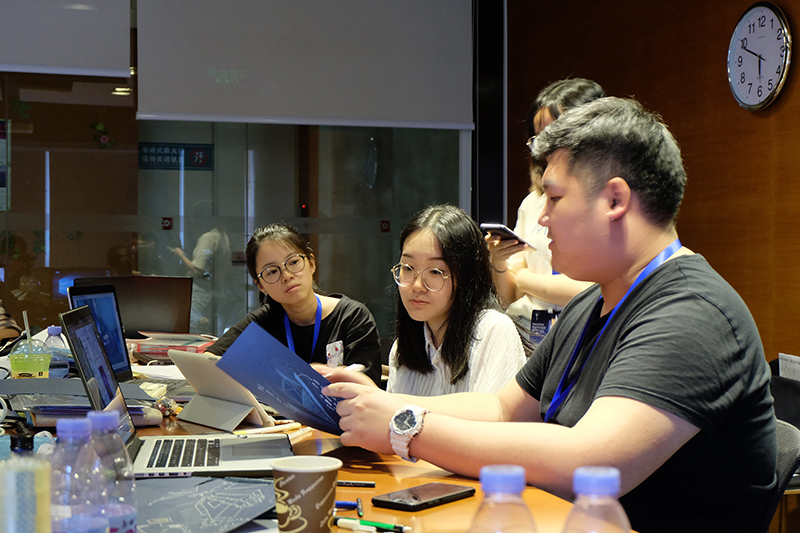
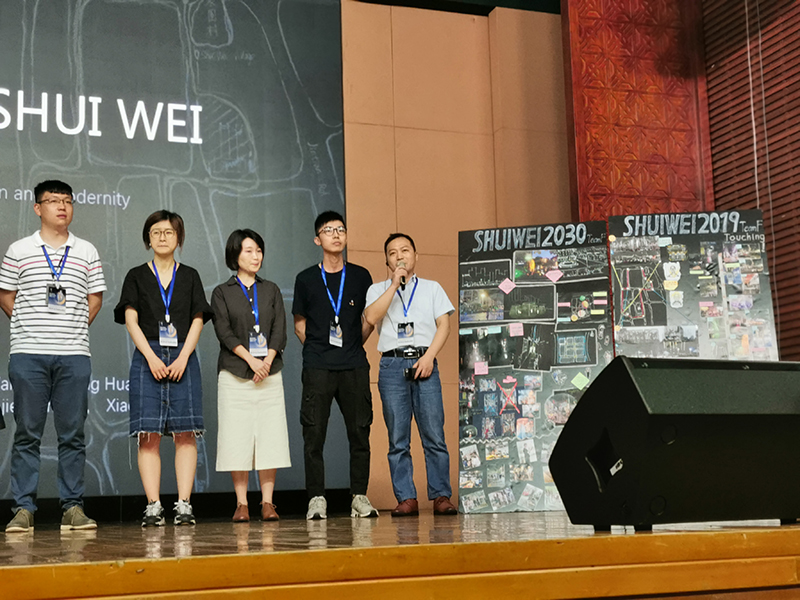
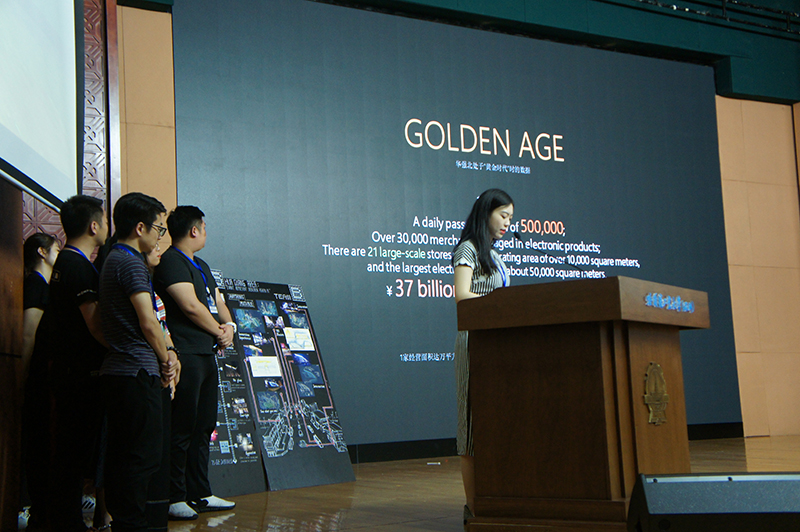
④Presentation May 19th @ Harbin Institute of Technology (HIT) Shenzhen
The three-day workshop was capped with a presentation at Harbin Institute of Technology. Each team gave a 15-minute presentation on the survey results in their assigned area, including the existing lighting environment and proposals for the Shenzhen nightscape of 2030. Afterwards, the core member pared with each group critiqued the presentation, exchanged opinions, and offered feedback about the proposals. Some teams proposed to reclaim dark areas, as to reveal a starry night sky and create a place of rest in the nightscape. Other teams wanted to express Shenzhen for the worldly, cutting-edge city that it is through the possibilities offered by new and high-tech lighting technology. After hearing several proposals envisioning the future of Shenzhen, participants were lost in thought about how they should implement a lighting design. The presentations provided a good opportunity for participants to take another look at and rethink the nightscape.
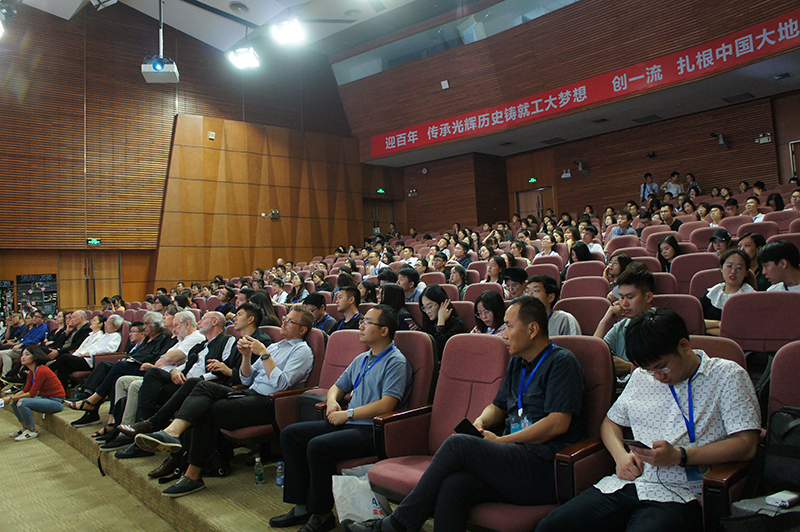
④Presentation Nightwalk Report by Team A : Shennan Road


The second and third tallest buildings in Shenzhen are positioned in an area of the city regarded at the “beginnings of Shenzhen.” Media façades and RGB flood lights illuminate clusters of buildings and smother their architectural characteristics. We labeled this as a villains of light. Locals seem to gather in a plaza in front of a theatre to enjoy conversation, dance, badminton, exercise, and other various activities. However, lighting for the plaza only came from the surrounding façade lighting. Heroes of lighting in this area include different usage for warm colored light and white light to highlight architectural features of the façade.
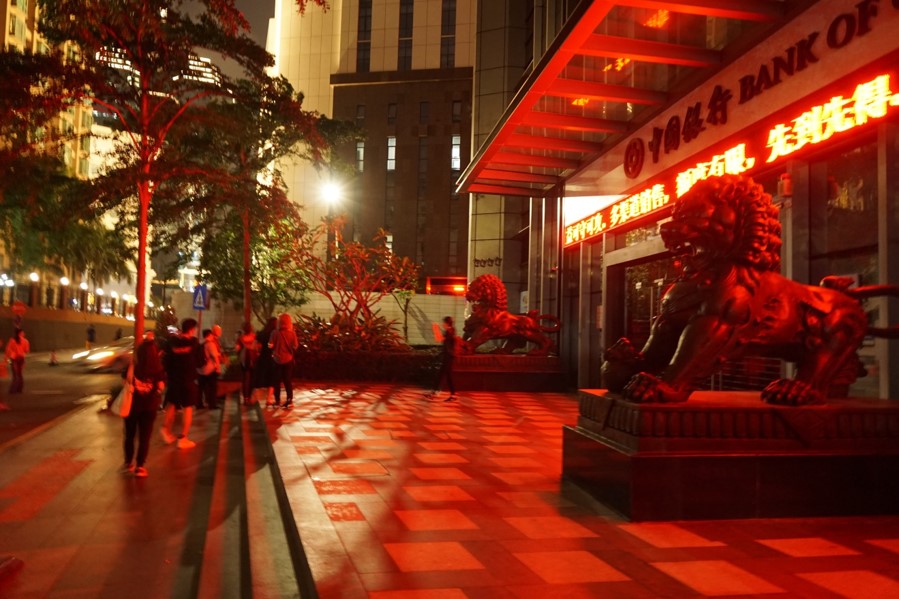
BAD
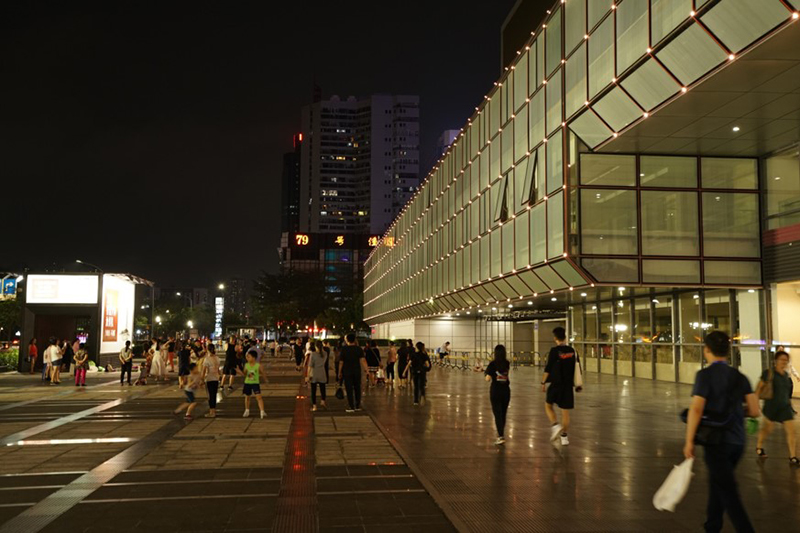
GOOD
④Presentation Presentaion & Prososa lby Team A : Shennan Road
“Inject vitality and create surprises in the quiet streets” In the proposal for the transformation of the Grand Theatre, the principle of people-oriented is adopted to extend the theater from the indoor space to the outdoor space, making the Grand Theatre Square an open stage of the city, combining interactive lighting and smart phones, so that everyone has their own The stage became the protagonist of the stage; in the transformation of the back lane of KKmall, the implantation of “injecting vitality and creating surprises in the quiet streets” was created.
Regarding the imagination of “Shenzhen Night Scene 2030”, Group A believes that the city is the place where people live. They do not want the front of all buildings to be bright at night. It is only necessary to emphasize the landmark buildings of the city. Other building facades need to be dark.
The illuminated building facade should be more interactive, artistic and interesting, showing the history and culture of Shenzhen’s starting point.
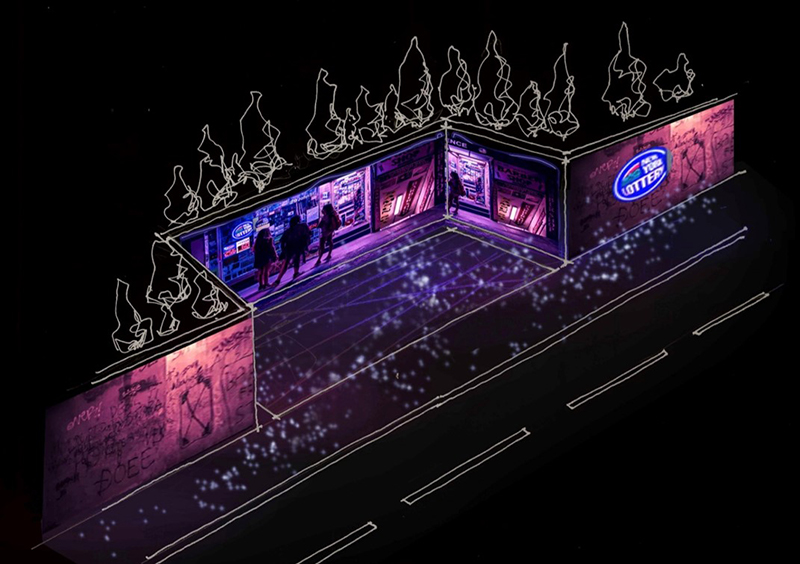
Proposal
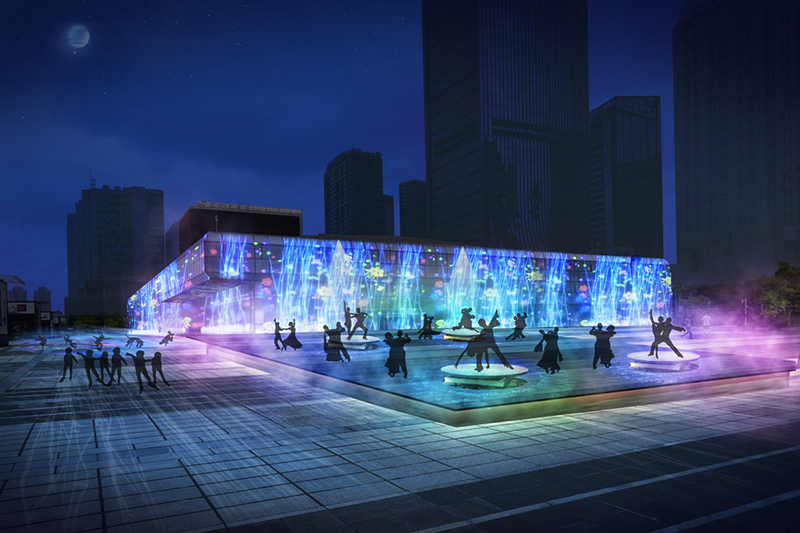
Proposal
④Presentation Nightwalk Report by Team B : Huaqiang Area
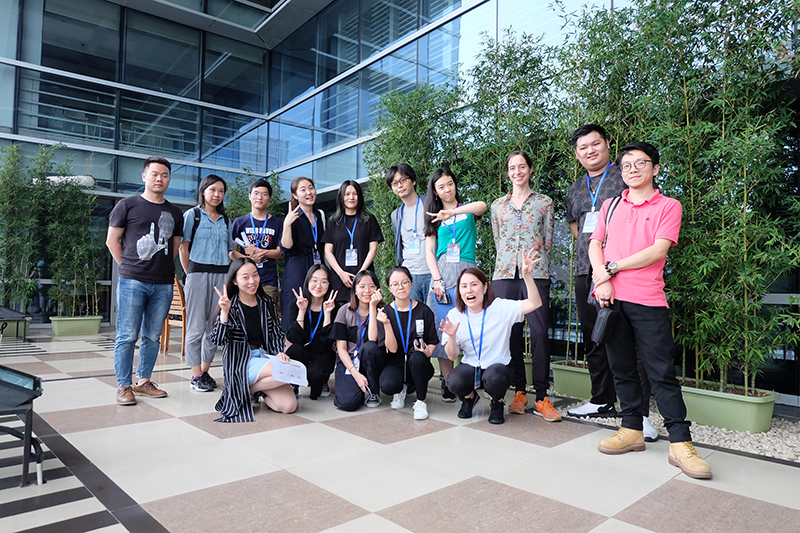
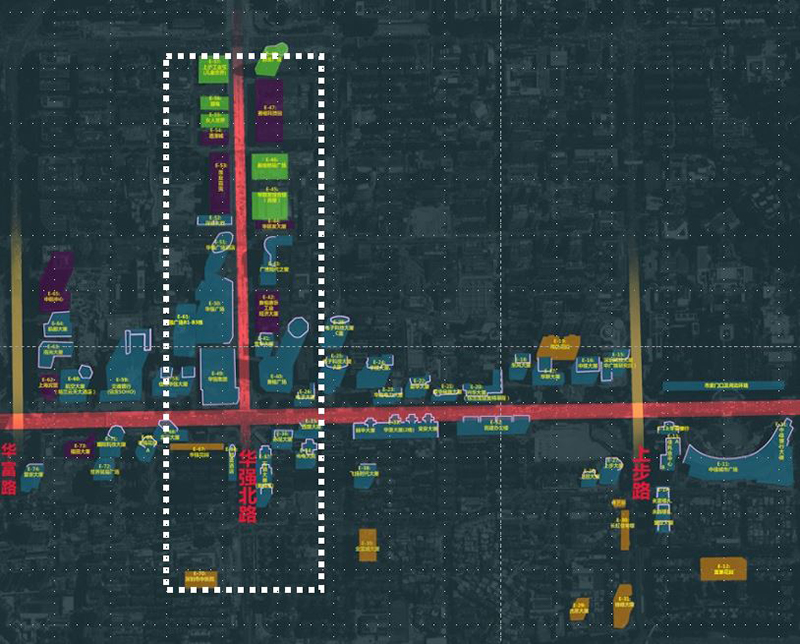
Huaqiang Area used to be a thriving electronic district in Shenzhen. Today the same familiar shopping malls line the streets of this commercial area. Traces of the old electronic district are hardly noticeable, with the area lacking character or something even noteworthy.
A 55 meter wide sidewalk continues on for 950 meters, if improved the area has a high potential of becoming a pleasant nightspot where people can enjoy public space without car traffic. Along with the existing heroes of light, small improvements in the area have the potential to really transform this space into a pleasant area. Villains of light include wasteful and haphazard lighting for signage and façade lighting and a lack of maintenance on lighting fixed underneath benches. For this cutting edge area of Shenzhen to stage a comeback several points for revision were proposed.

BAD
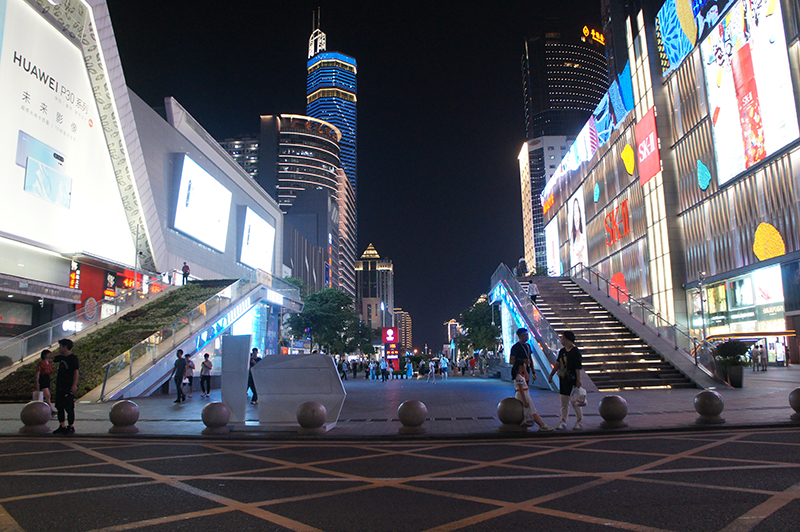
GOOD
④Presentation Presentaion & Prososal by Team B : Huaqiang Area
“Surprise Electronic Street: Experience the future of light and shadow”
At the same time, there are some controversial lighting designs, including lack of coordination of lighting layout, less interaction between lighting and venue users, and glare problems caused by excessive LED subtitles, line lights and local brightness of shops. Wait.
Experts and team members look forward to Huaqiang North 2030 from both time and space dimensions, hoping that street lights will interact with the public. For example, using the existing piano in the square, combined with 3D mapping to create a multi-sensory lighting experience. Based on the full imagination of the future technology, it is proposed to use high technology to create an immersive light environment, so that Huaqiang North can continue the history of modern technology, and at the same time return to the people-oriented experience appeal.
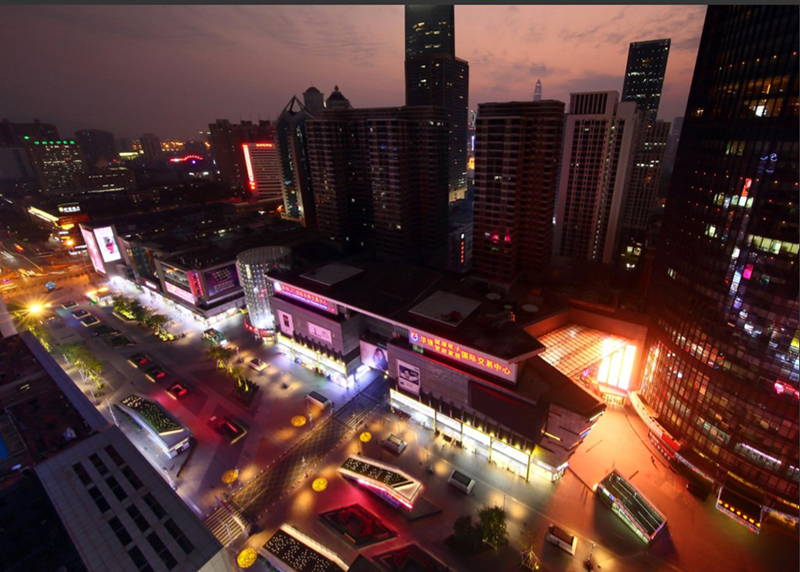
Proposal
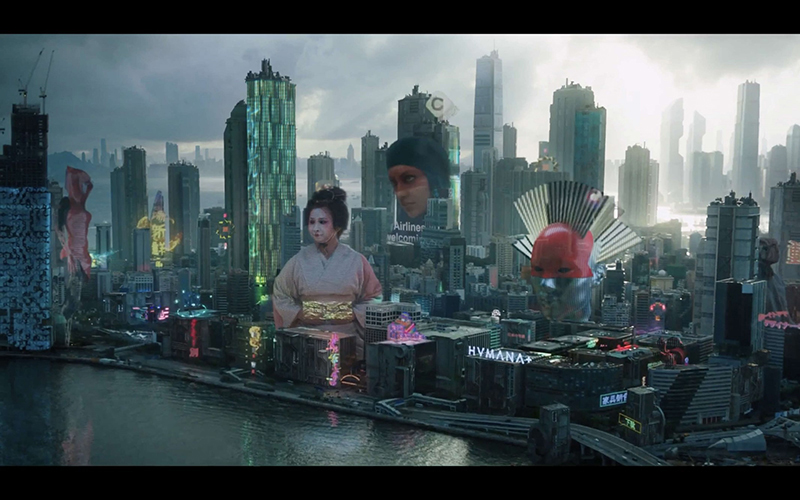
Proposal
④Presentation Nightwalk Report by Team C : CBD Area
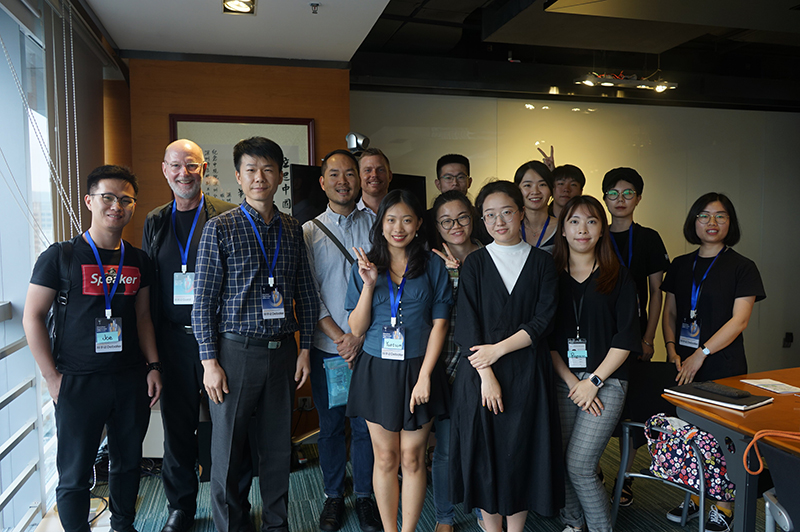

The route for Team C is the CBD area. Night walk started with an amazing lighting show in the center of CBD. With huge scale of lighting setup on the façade of high-rise commercial buildings, it showed the story of henzhen city development in the past 30years.
After the brilliant lighting show, the team continued to explore the CBD area. The public area lighting is not sufficient in terms of brightness and lack of connection between each building.
The team suggests to add essential lighting for the squares in front of the Contemporary Art Museum and Children’s Palace. The lighting should be welcoming and inviting for people to use the area. By adding lighting to link up each building, the CBD area will be united as one community.
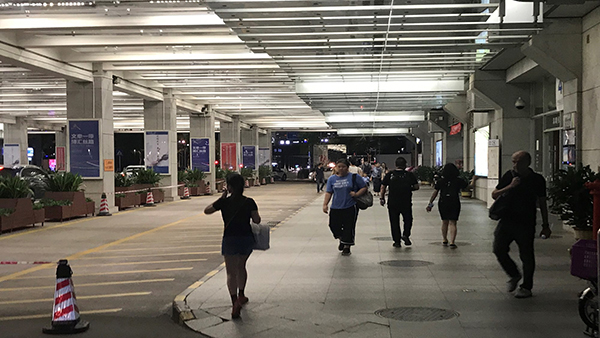
BAD
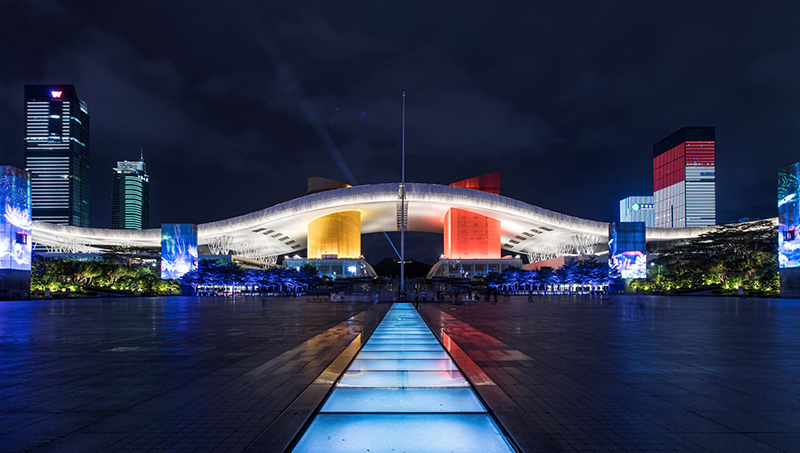
GOOD
④Presentation Presentation Panels & Proposal by Team C : CBD Area
“Let the stars flow down from the Milky Way and sprinkle the Starlight Cabin”
In the future, we should pay more attention to people’s demand for lighting, do pedestrian-scale lighting design, and focus on improving the functional lighting of public spaces, so that the Civic Square will become a leisure center for nighttime citizens from the administrative center of the daytime.
For Children’s Palace, the square in front of the place is not bright enough and lack of interesting lighting at the night time. Although the building interior lighting contribute some base lighting, the team suggest to bring the “Starts” to the children. The front square was set up with a childlike starlight cabin, and the stars were taken off to the public.The long staircase is lighted up for safety purpose too.
In Contemporary Arts Museum, the landscape lighting is too simple. The pole lights are glaring. Some paths are completely dark with failed lighting. The team suggest to have some diversified lighting for the landscape such as water feature, sitting benches, and add some tree uplight to increase the brightness.
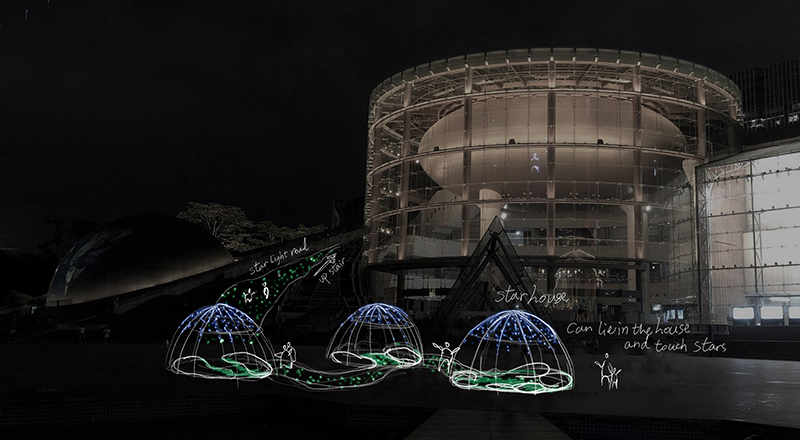
Proposal
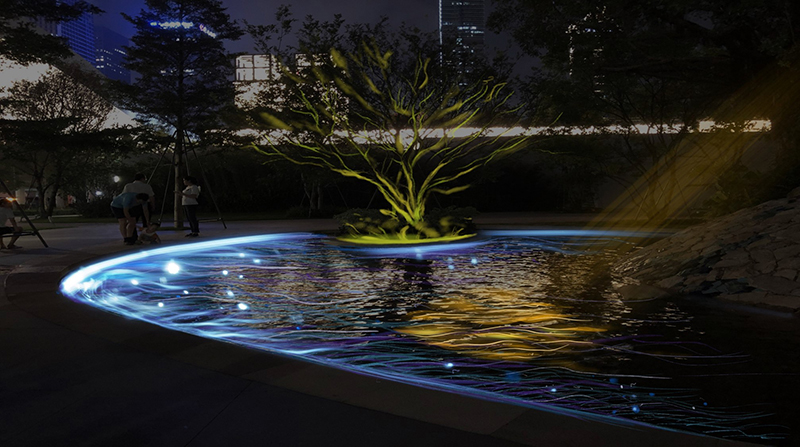
Proposal
④ Presentation Nightwalk Report by Team D : Shenzhen Bay Bay Area

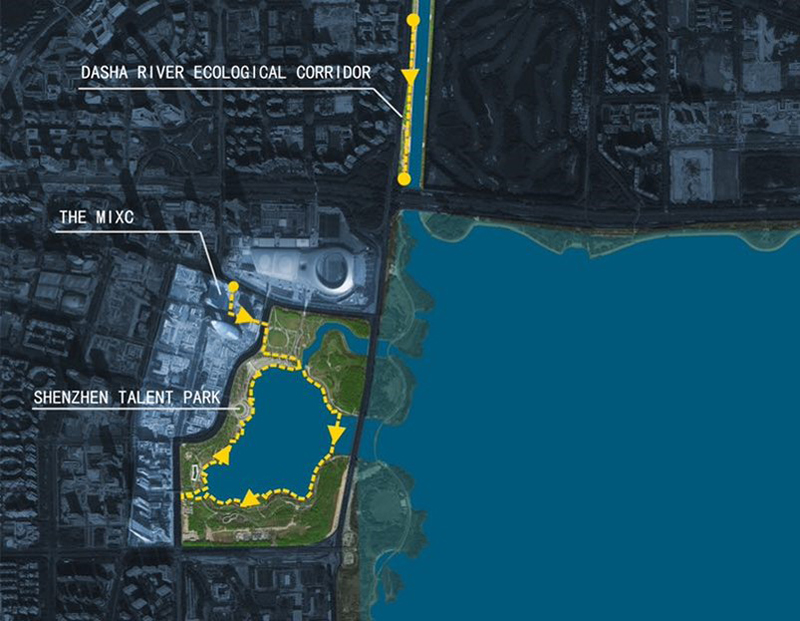
Team D Surveyed Shenzhen Bay which is most rapidly developing area and created the futuristic city skyline.
Also, we walked around Dasha River Corridor and The Mix C Shopping mall area which adjacent to the Bay. We found many unique lighting installations at Mix C Shopping mall, it added a nice touch to vast artificial urban scape. For the Talent Park which is located at waterfront of the bay, even though we found many challenging lighting schemes, unfortunately it was unorganized such as glare issue, insufficient light level for safety, light pollution and wasted energy. There are many rooms for improvement for the lighting design.
On the other hand, Dasha River Corridor is well organized the lighting design for serve the purpose and giving the comfortable and relaxed place for residents during the night.
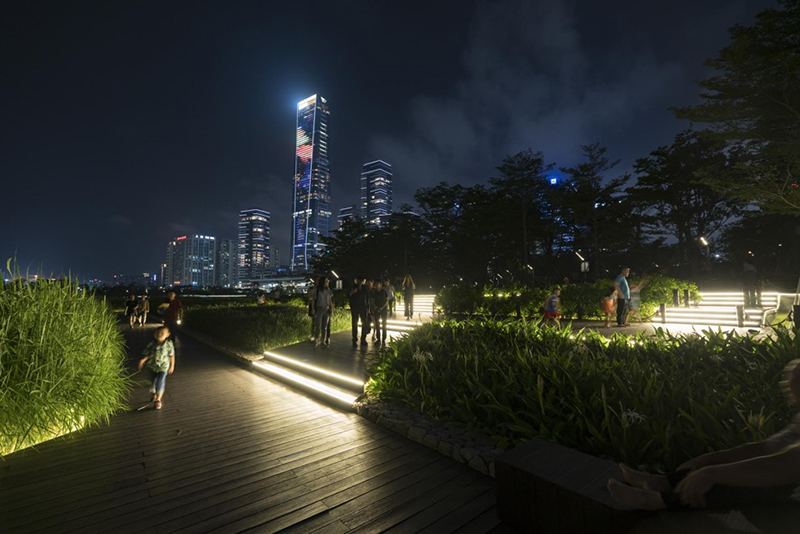
BAD
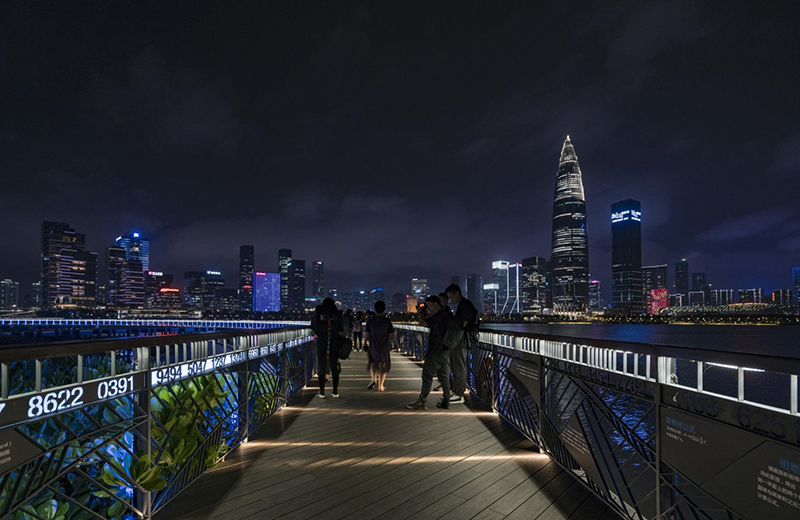
GOOD
④Presentation Presentation Panels & Proposal by Team D : Shenzhen Bay
“Return the starry sky to the city”
In 2030, the team hopes that the night scape of Shenzhen Bay will be more beautiful, artistic and less commercial feeling. Future Night scape at Shenzhen Bay will be well balanced with urban skyline, reserved nature such as forest of Mangrove, Migratory Birds and Human.
The people enjoy to see the stars in dark sky with urban skyline. To accomplish this, the following proposals should be implemented toward to 2030.
– Reorganized the vista point for viewing the urban skyline. (most beautiful and impressive)
– Creating a most beautiful skyline with minimum building lighting.
– Creating the interactive façade light contents by open to public.
– Environmental Friendly: Minimum lighting (intensity & number), No light pollution to sky, High efficiency lighting fixture, No Glare.
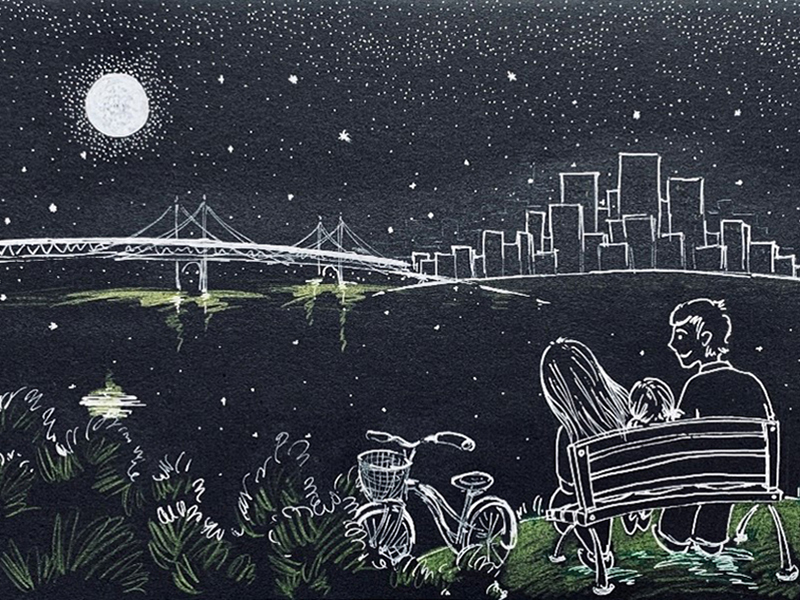
Proposal
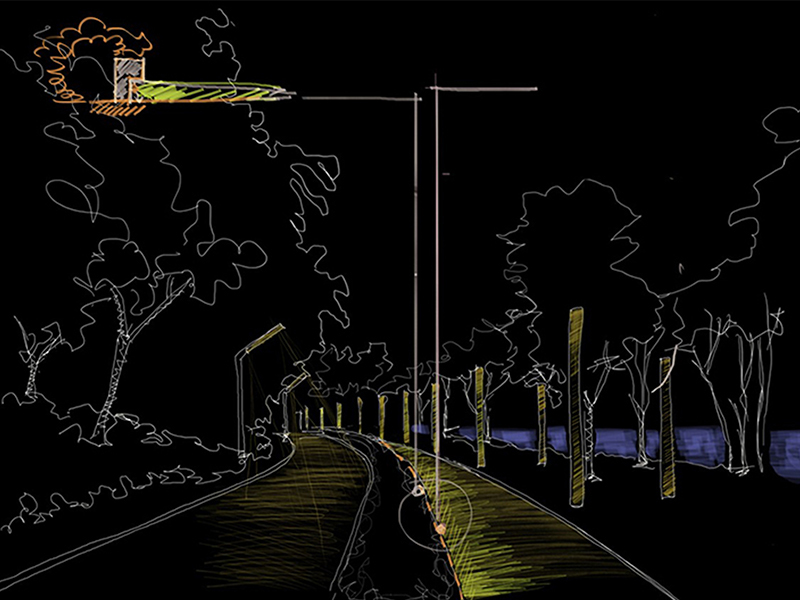
Proposal
④Presentation Nightwalk Report by Team E : OCT Area Mixed Developed Community(OCT)
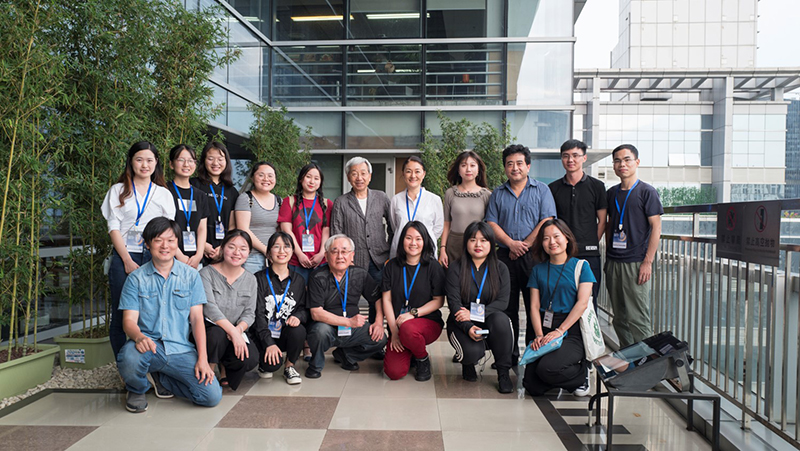
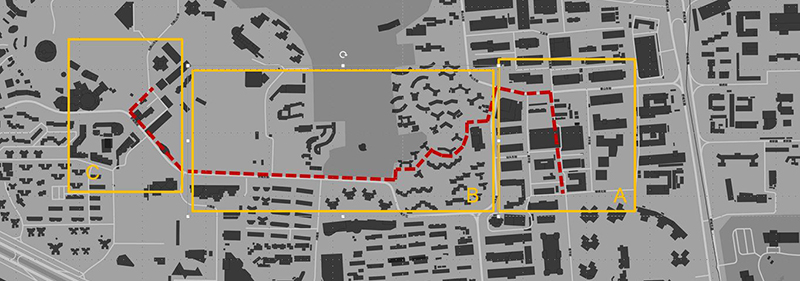
Located in Nanshan District, the center of Shenzhen city, OCT is a well-known high sense area, covering residential, cultural, commercial, and tourism functions. In the rapid development of various districts in Shenzhen in recent decades, the lighting layout of OCT is a rare area with little change. The slightly dim lighting system forms a quiet, peaceful, nostalgic and slow-paced feeling. This “dark” atmosphere in this area should be retained as a whole, Therefore, the theme of “rust night” was finally determined. “Rust” has multiple meanings and can be understood as beautiful nights, old nights, warm yellow nights, slow-paced nights, nights in memory, nights with oneself…
In order not to break this calm atmosphere, the team explored the future of safer and more comfortable lighting.
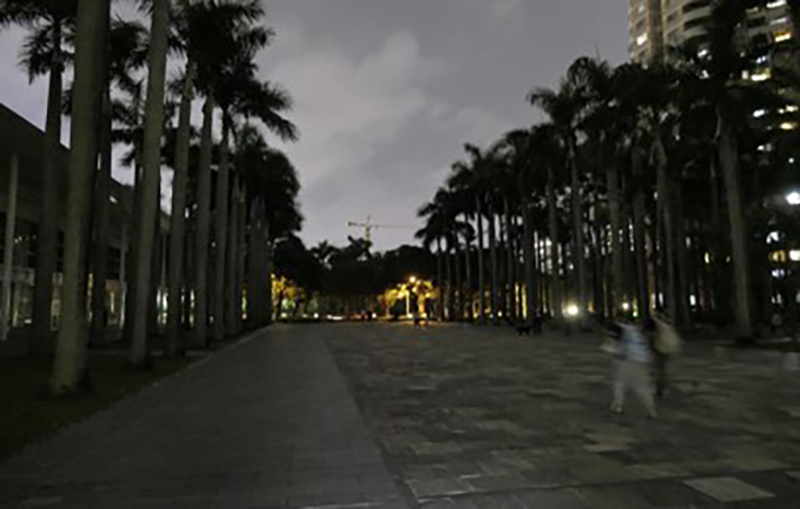
BAD
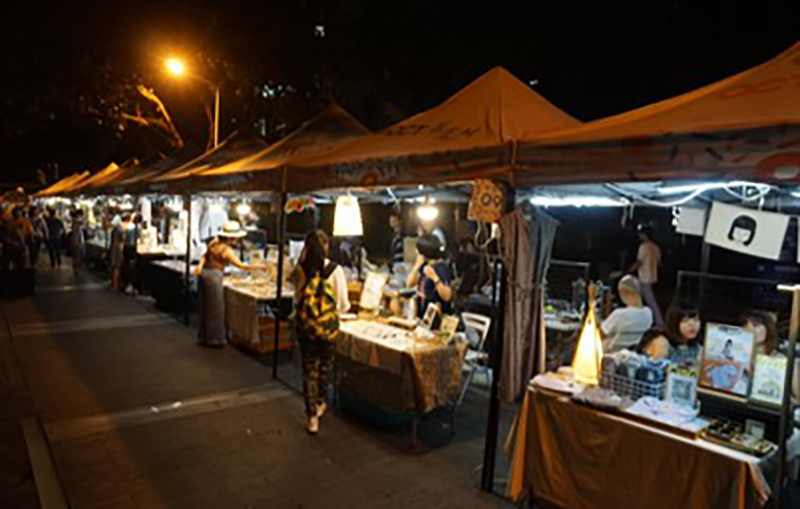
GOOD
④Presentation Presentation Panels & Proposal by Team E : OCT Area
“Illuminating the street furniture that the public loves, Outside Living Room”
The area is a large area with a mix of homes, offices, commercial facilities, restaurants and bars, making it a great place to enjoy the evening. However, the lights were installed almost ten years ago, and there are problems with the deterioration of the lamps, and there are many dark places at night.
We proposed three lighting methods, “Function Lighting”, “Spot Lighting” and “Fun Lighting” in order to maintain its “dark” personality and “culture” sentiment.
Try to preserve the “dark” environment of the area, reduce the standard of road function lighting, provide a more humane dark environment, create an outdoor living room through lighting, create vivid light and shadow effects, pay attention to the forgotten fun corners, and create spaces like “postcards”, icons of the area.
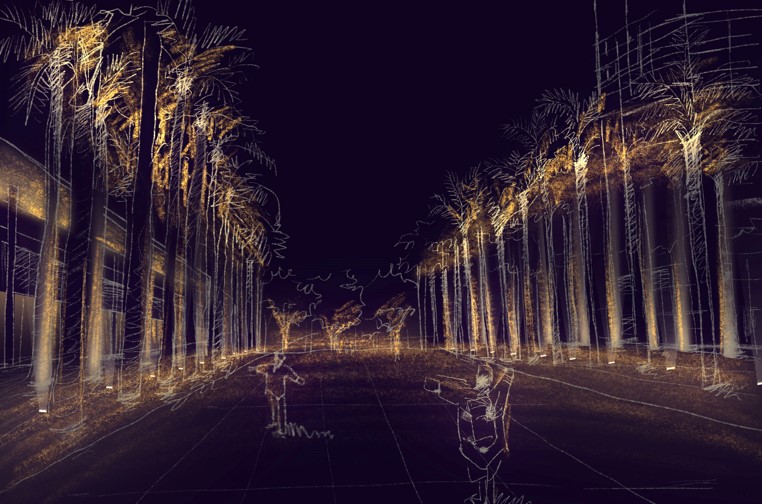
Proposal
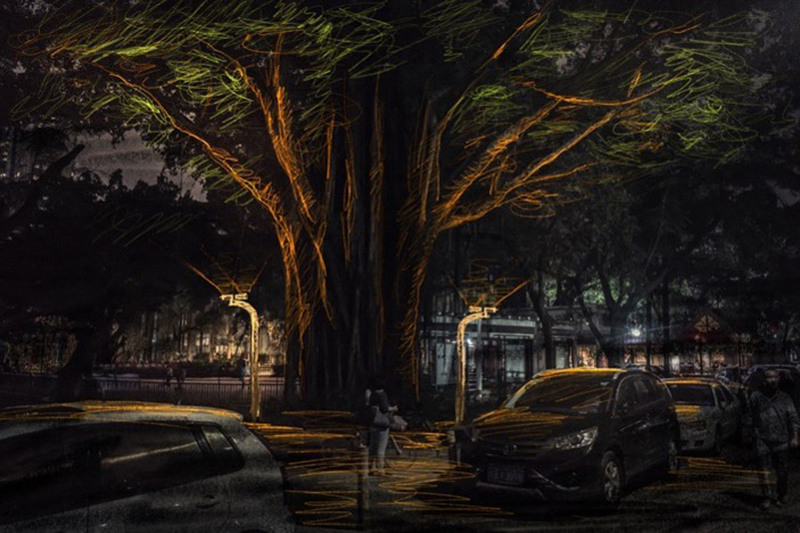
Proposal
④Presentation Nightwalk Report by Team F : Shuiwei Village Traditional Housing Community
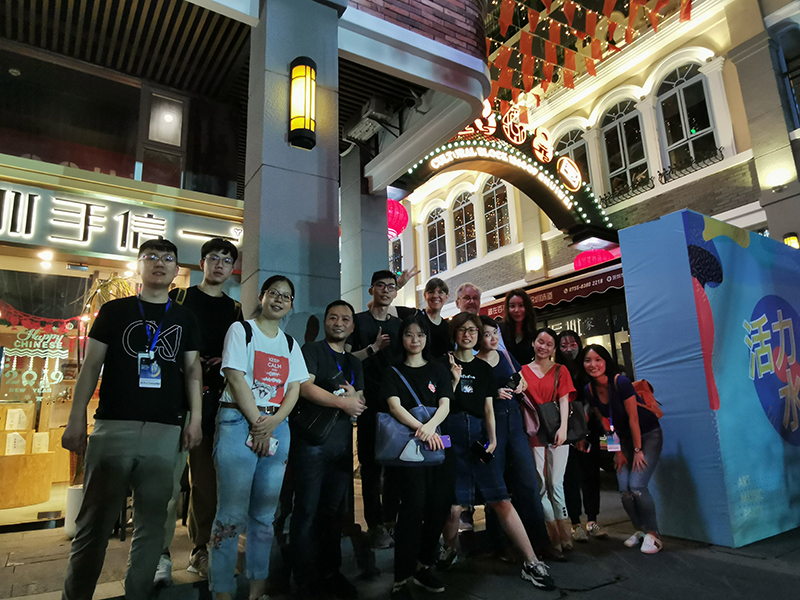
Shuiwei Village and Shenzhen are symbiotic, full of vitality, complete social organization and communication form, providing college students and entrepreneurs with the shelter of their dreams.
The overall lighting atmosphere of Shuiwei Village’s current night lighting conforms to the regional characteristics: commercial street lighting creates an organic life texture and unique aesthetics. The 1368 cultural district is avant-garde, trendy and creative, and it is worth retaining. Artistic sense. However, there are still some problems that need to be improved, such as the glare of the entrance lighting of the Shimen Village and the high-beam lighting of the Cultural Square, and the lack of illumination of some of the roads and the middle of the handshake building.
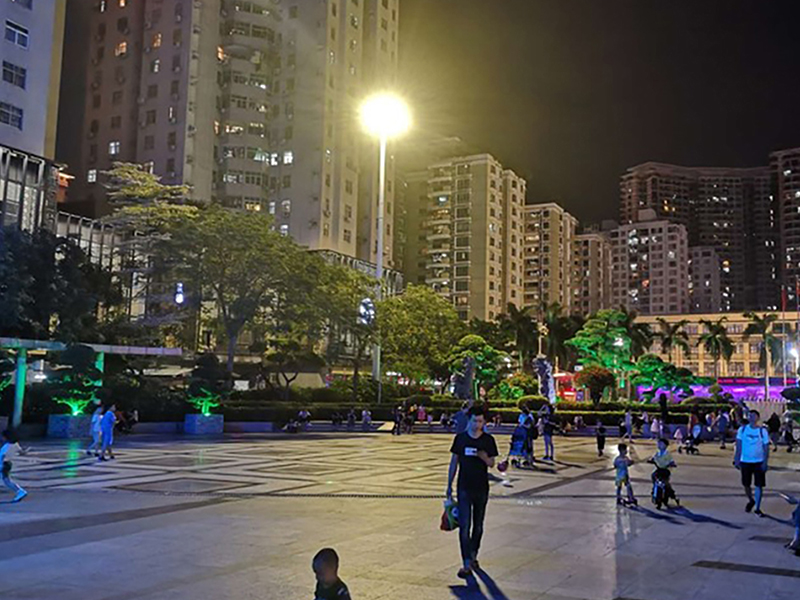
BAD
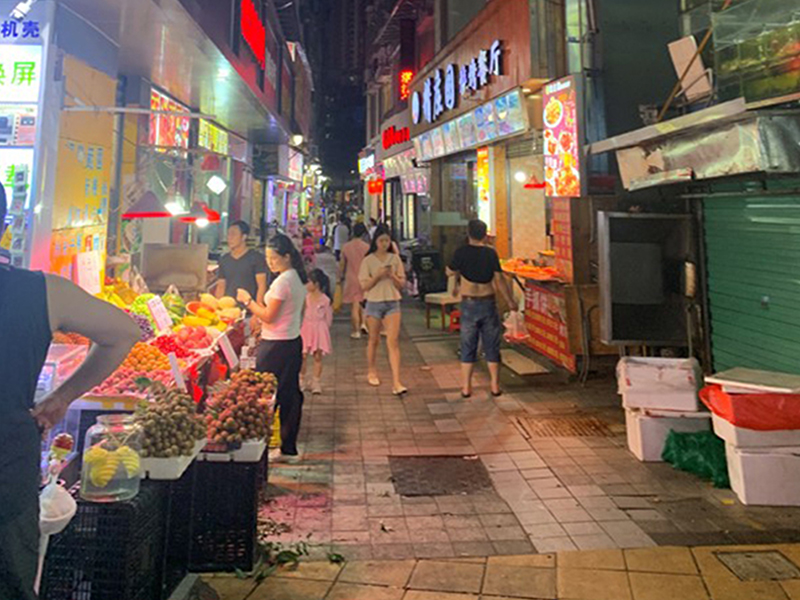
GOOD
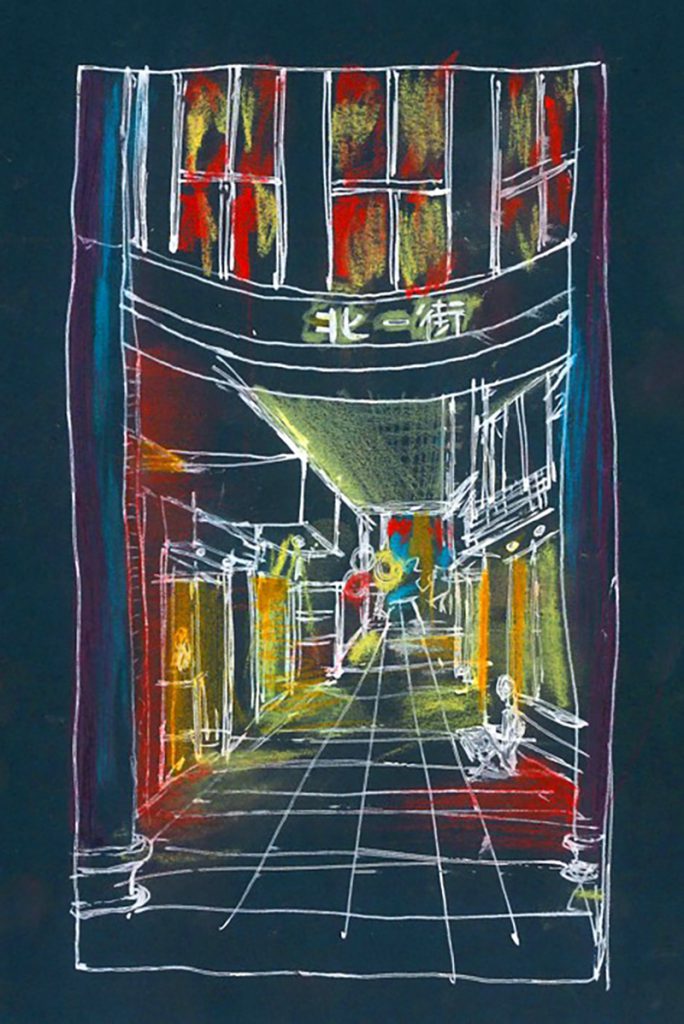
④Presentation Presentation Panels & Proposal by Team F : Shuiwei Village
“Water circumference 2030”
Looking forward to the Shuiwei Village in 2030, team members believe that the lighting of Commercial Street and 1368 Cultural Street should be preserved, and more open-minded, more interactive, symbiotic and technological features.
The concept of people-oriented and refined design should be emphasized to improve the illumination of the road surface, strictly control the glare of the lamps, and let the traditional and modern integration and symbiosis in the night scene, and find a perfect balance.
⑤Panel Discussion
Discussions were held with seven panelists on the theme of Shenzhen Night View 2030.
Panelists:
Liang Shuming: Director of Lighting Center of China National Institute of Regulation/Xu Dongliang: General Manager of Dongliang International Lighting Design (Beijing) Center Co., Ltd./Yang Wei: Assistant Dean, Associate Professor, School of Architecture, Harbin Institute of Technology (Shenzhen)/Kaoru Mende: Japanese Master of Lighting Design, LPA founder/JJan Ejehed: Lighting Designer, Stockholm/Gustavo Aviles: Lighting Designer, Mexico City/Lisbeth Skinbjerg Kristensen: Lighting Designer, Copenhagen
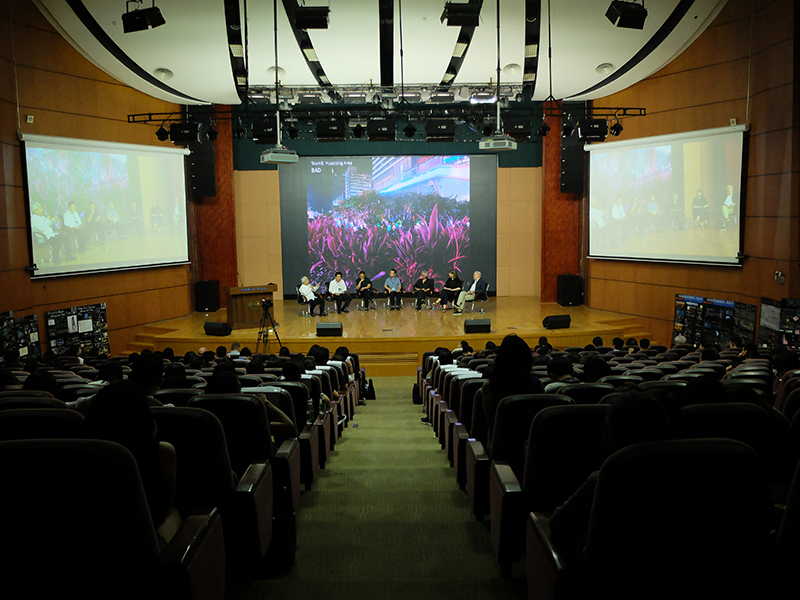
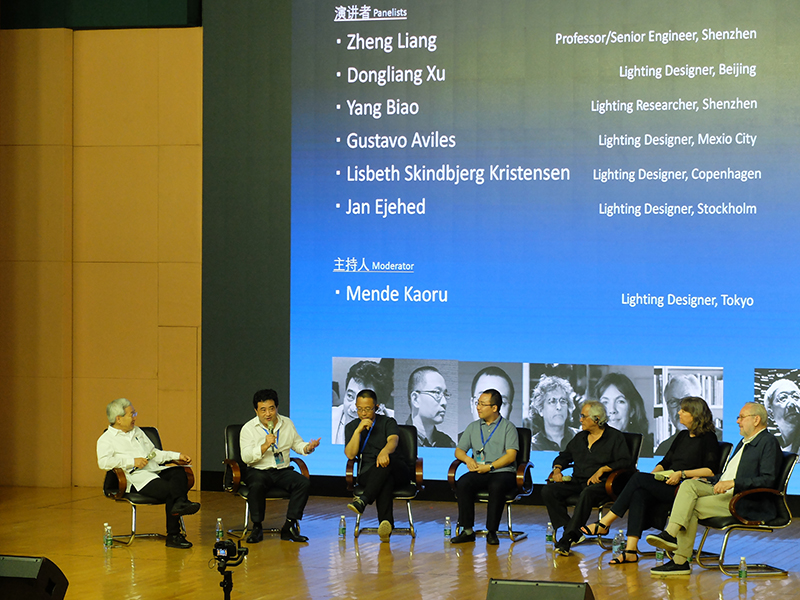
Comments from each panelist
Mende:Shenzhen has a very beautiful nightscape and is very advanced in the technology and management of light at night. The Shenzhen Light is very impressive, aesthetic and advanced in media facade technology, but the change of lighting may affect the lives of the surrounding residents. China advocates “green development, green lighting”, and believes that Shenzhen can make more improvements in lighting in the future, and with the continuous development of technology, better promote the advantages of urban lighting, abandon the disadvantages of urban lighting, let the city change To be more energetic, “light” has become more reasonable.
Ejehed:Shenzhen is an energetic and young city, but I also found some places that are too bright. It feels like a “no night” and “everyday Christmas” city. Static lighting should be set at the initial stage. With further development, the city needs to be more dynamic and diverse. Then distinguishing the lighting of different areas and increasing the interactivity will be necessary.
Kristensen:Composition of light is very diverse compared with other countries and cities, the changes in Shenzhen night lighting are more diverse and frequent. I can’t help thinking about the relationship between lighting and architecture. Maybe the future lighting can help pedestrians identify a building. In terms of lighting management, on the one hand, it can stipulate which areas can be illuminated with very bright facades, and where not, use lights to classify the functions of the city; Differentiate lighting according to time, as well as the brightness and speed of light changes and create appropriate lighting according to local conditions.
Aviles: I saw a fire and a passion in their eyes of the youth, which also made me understand why Shenzhen can develop so well in such a short period of time. The Shenzhen sidewalk and the lighting of the river are handled very well and maintain a very good balance.
On the other hand, problems such as light pollution can also occur. In the future, we should better understand the needs of the citizens, create more relationships with the light, and use technology to make people have more personal experiences.
Yang:In the lighting design, the consideration of “oneself and others” by Professor Liang Henian is essential to understand the relationship between the person, city and the environment. The concept of good lighting constantly changes with to time and people, but my understanding is that you do not feel the light, and the place I am willing to take my children to, has good lighting.
In the future: First, technology is the business card and impression embodied in Shenzhen. There should be more technology embodied, more pedestrian-friendly lighting design, and some experimental attempts. The demand is revealed in the differing results of the process. Secondly, how can the lighting design slow down and stay? How to adapt to the elderly people, let more people participate in the construction of Shenzhen, and enjoy the various conveniences and conditions brought by the city? Those will be the parameters that have to be considered.
Xu: Regarding lighting, there is a discussion in the industry that “reducing excess lighting and adopting self-luminous material” is still in the works. Lighting has three functions: excitement, comfort, and stability. Experts tend to be more concerned with comfort and stability, and implementing exciting light shows. Hence it will be a challenge to continue development in such areas. I think that lighting in 2030 should be rooted in technology and aesthetics. For landscape lighting, it should fundamentally return to aesthetics. Shenzhen is the capital of design, but lighting design may affect architectural design. Future lighting design should make the building perform better and make the city more dynamic.
Liang:The first lighting project I did in Shenzhen was “Shenzhen Special Economic Zone Road Lighting System Planning (2000-2010)”, starting with the most basic functional lighting needs, trying to make the seemingly small topic of lighting bigger than the city. Shenzhen’s rapid development in the past 40 years has achieved remarkable results, and the achievements in urban lighting planning, design and construction are obvious to all. In the past, lighting focused on the image and charm of the city. In the future, we should pay more attention to the needs of the people, pay attention to the scale of the pedestrian line, pay attention to communication and reflect the demand for technology and art appreciation.
Shenzhen will be 50 years old in 2030, and it will be more stable while maintaining innovation. Caring for the whole age group and constructing a light environment in which people live in harmony with nature and the city should be the ultimate goal pursued by Shenzhen as a pioneer city. How to make the city’s light environment better, we should coordinate planning, design and construction, strictly abide by the policy formulation of the planning, strengthen refined design and management. I believe that the night scene of Shenzhen 2030 will be even better to look forward to!






